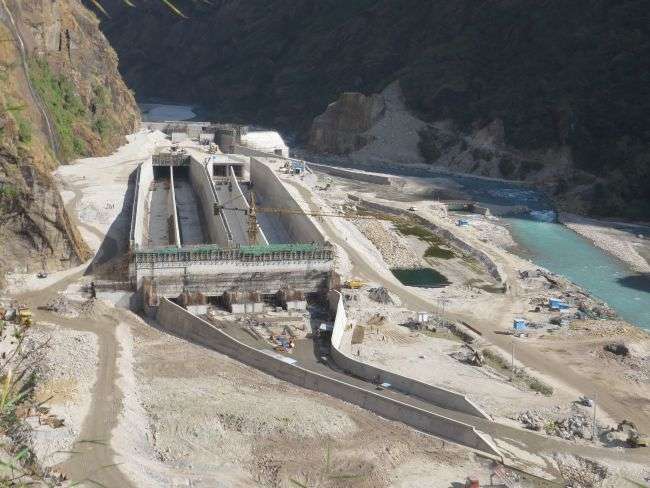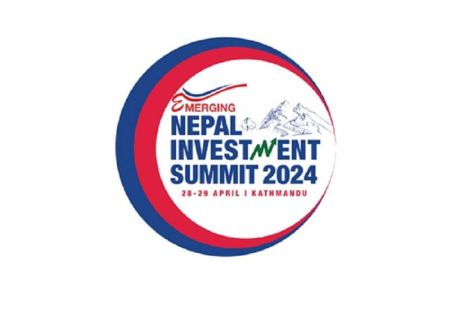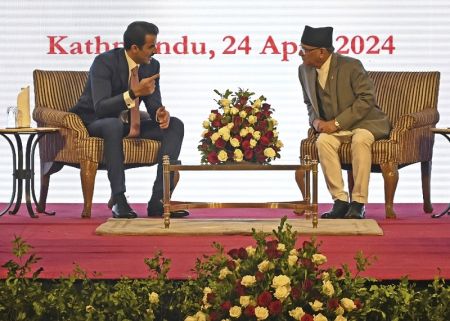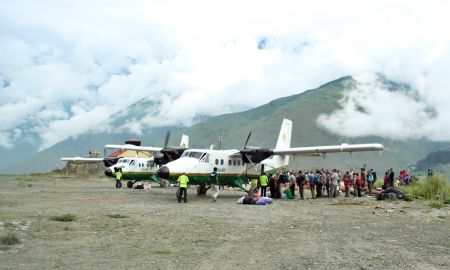June 30: Test production of the Upper Tamakoshi Hydropower Project will begin from coming Monday (July 5).
The hydropower project under construction in Bigu village of Dolakha with domestic investment has a production capacity of Rs 456 MW (six units of 76 MW capacity each). The first unit is scheduled to start generating electricity as a trial from July 5.
Hitendra Dev Shakya, executive director of Nepal Electricity Authority (NEA) and chairman of Upper Tamakoshi Hydropower Project Limited, said that the other units will generate electricity afterwards.
A team including Shakya and Prime Minister's Development Expert Gajendra Thapaliya had monitored the project site on June 27 and 28. During the field visit, the team had monitored equipment at the powerhouse, the dam site, as well as the new Khimti substation of 220 MW under construction at Khimti in Ramechhap.
"We have brought the project, which is facing various problems, to the point of generating electricity through continuous efforts. All the tests have reached the final stage. Now, if there is no technical problem, we will start generating electricity from the first unit on Monday," he said, adding, “If no immediate decision had been taken on the design modification of the penstock pipe, the project would have been delayed further. We have completed the work by making a timely decision.”
Reservoirs and dunes have been successfully tested in all types of hydro-mechanical devices such as water-filled dams, intakes, civil structures, and connected gates, staples. The electricity generated from the project will be transmitted to the national grid through Gongar-Khimti-Dhalkebar 220 KV transmission line.
Likewise, the 76 km Khimti-Dhalkewar transmission line will also be tested. The 47 km 220 KV transmission line from Gongar of Upper Tamakoshi Power House Dolakha to Khimti of Ramechhap and the new Khimti substation will also be tested.
The construction work of the project site office, access road to the project site, roads, bridges, and other infrastructures was started in the Fiscal Year 2062/63, and the construction of the main structures began in the Fiscal Year 2067/68. The construction of the project was delayed due to the catastrophic earthquake of 2072 BS and subsequent aftershocks and floods, problems in transportation of fuel and construction materials due to Madhes movement, design changes, the poor performance of the hydromechanical (Lot 2) contractor.
The contract for Lot 2 was awarded to the Indian company Texma's Rail and Engineering. Due to the poor performance of the company, the production and connection of hydro-mechanical equipment including penstock pipes of the dam have been delayed, affecting the overall construction work of the project. The construction of the project was halted for almost two years due to the earthquake. In addition, the construction of the project was affected by the construction of a tunnel to the dam site, design manipulation of some structures, and the spread of the Covid-19 pandemic around the world.
After Texma, which got the contract for Lot 2, delayed the work, the responsibility of pipe connection in the lower vertical tunnel, which was considered very difficult, was given to the contractor of Electromechanical (Lot 3) without any financial burden. The project has reached the stage of generating electricity with the tireless efforts and support of high political and administrative leadership, employees of the project, contractors, locals, and others.
The project had upgraded the Charikot-Dolakha-Singati 35 km road at a cost of around Rs 1 billion. The project has constructed 29 kilometers of road and seven concrete bridges from Singati to the dam site in Lamabagar.
Earlier this week, the project had reportedly said the test production would begin from July 15.






















